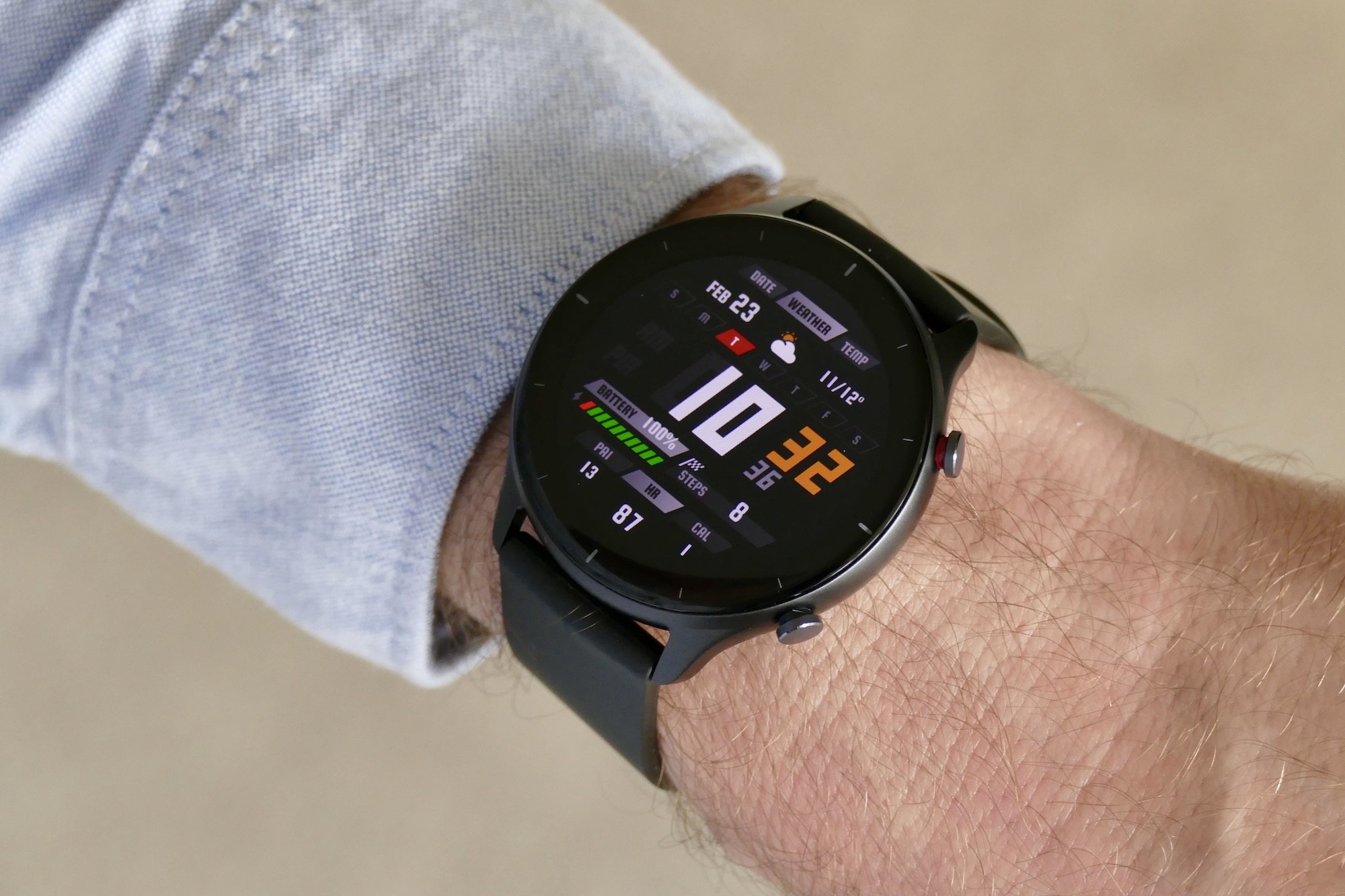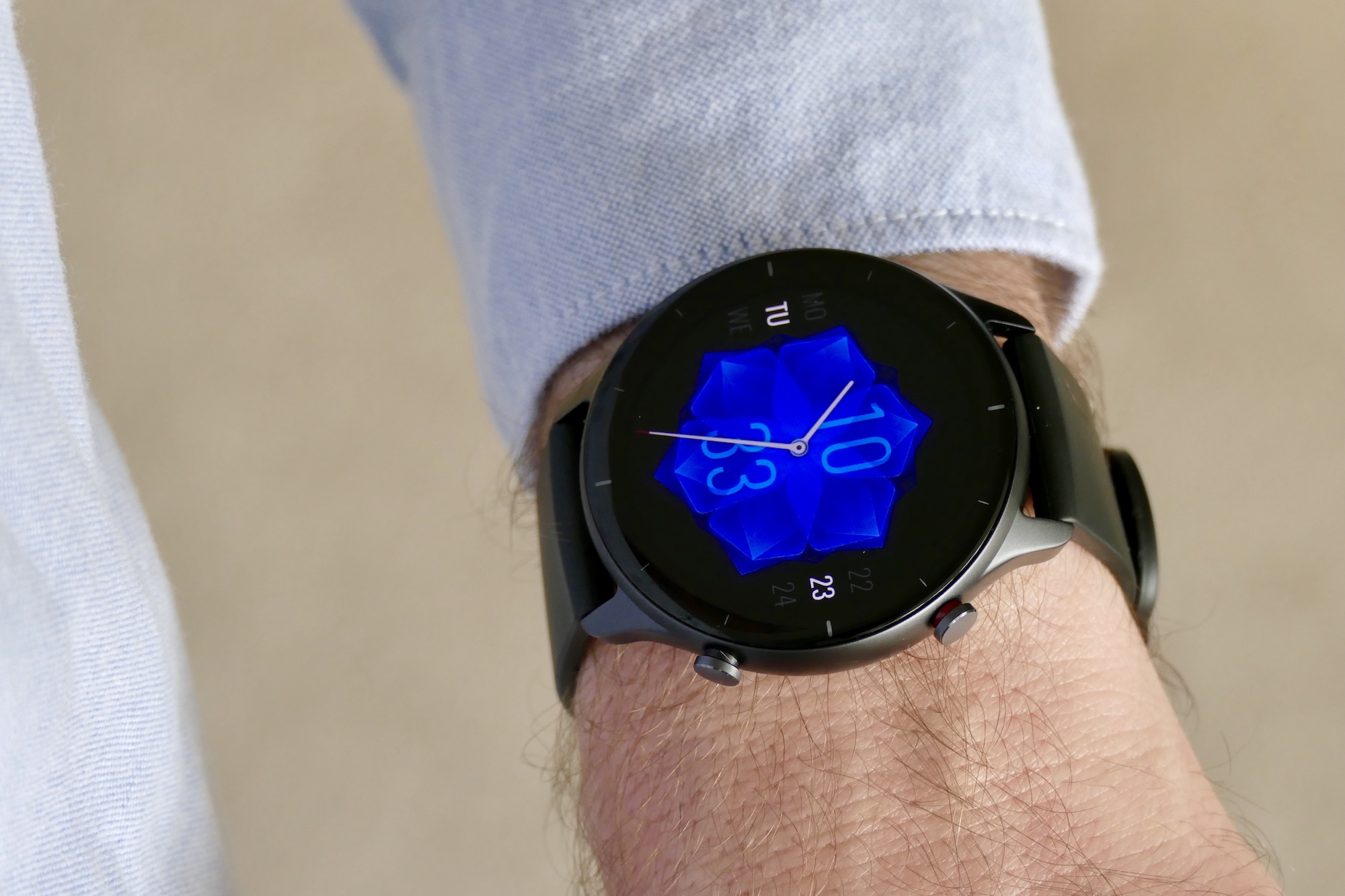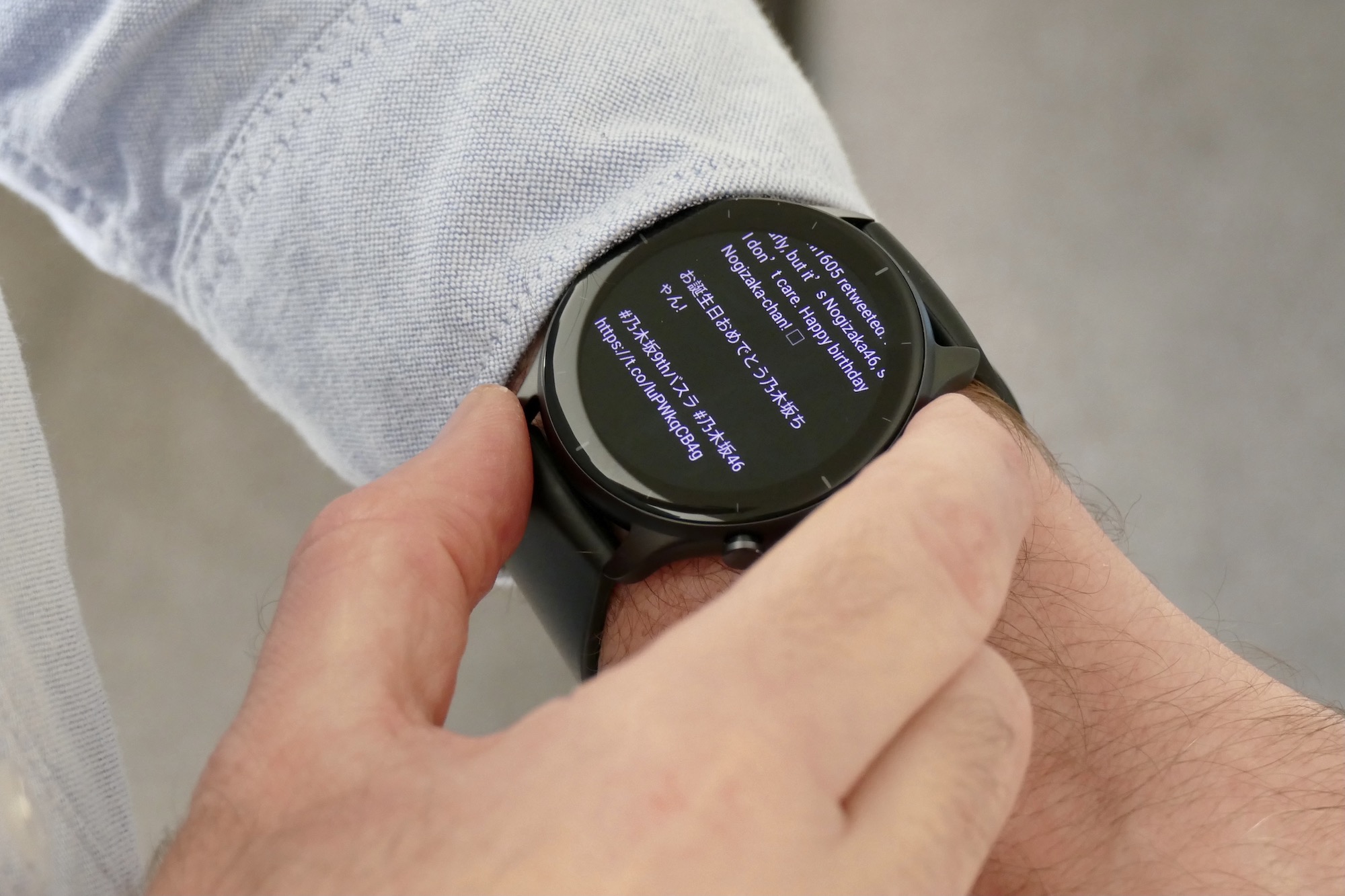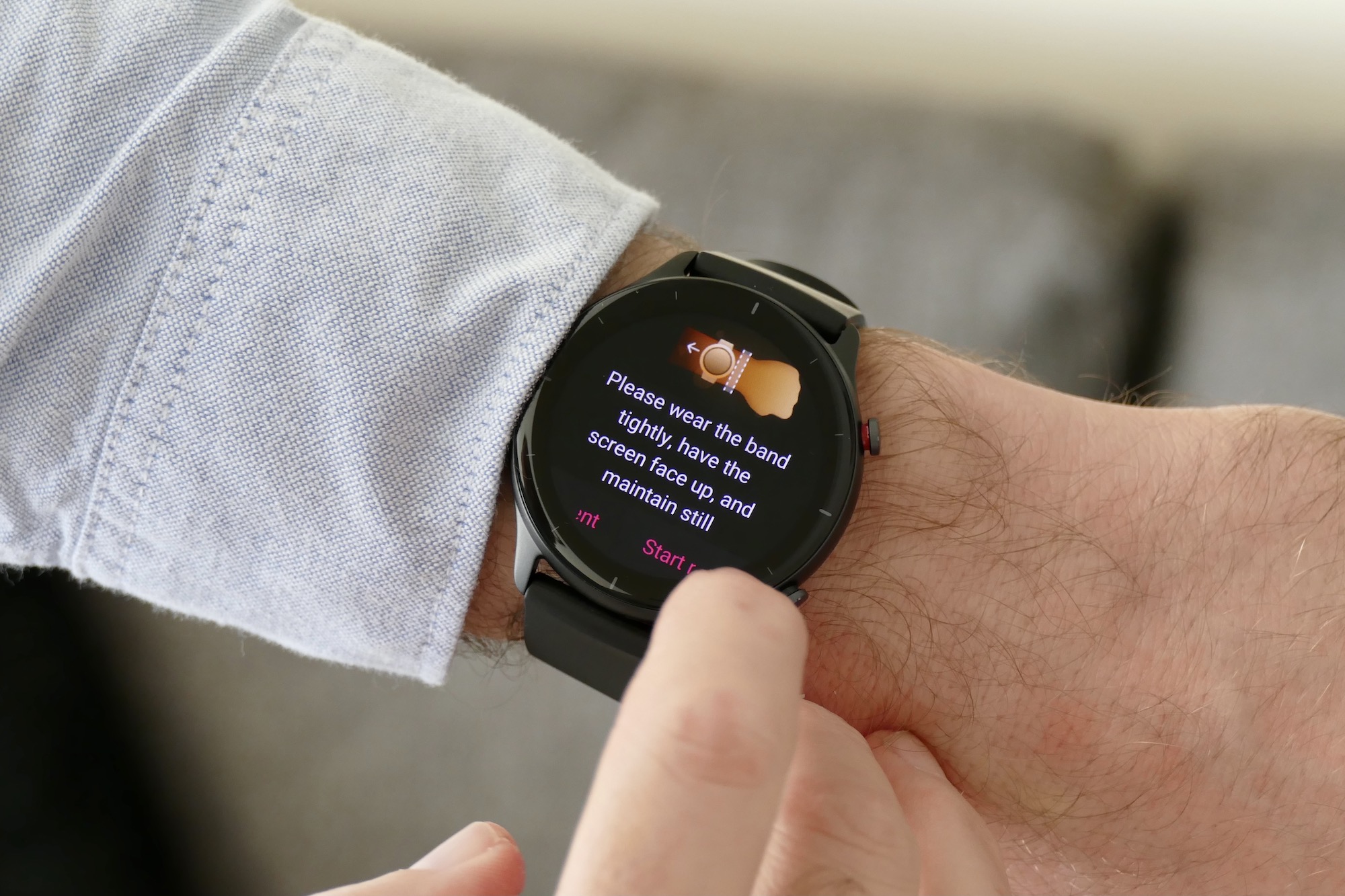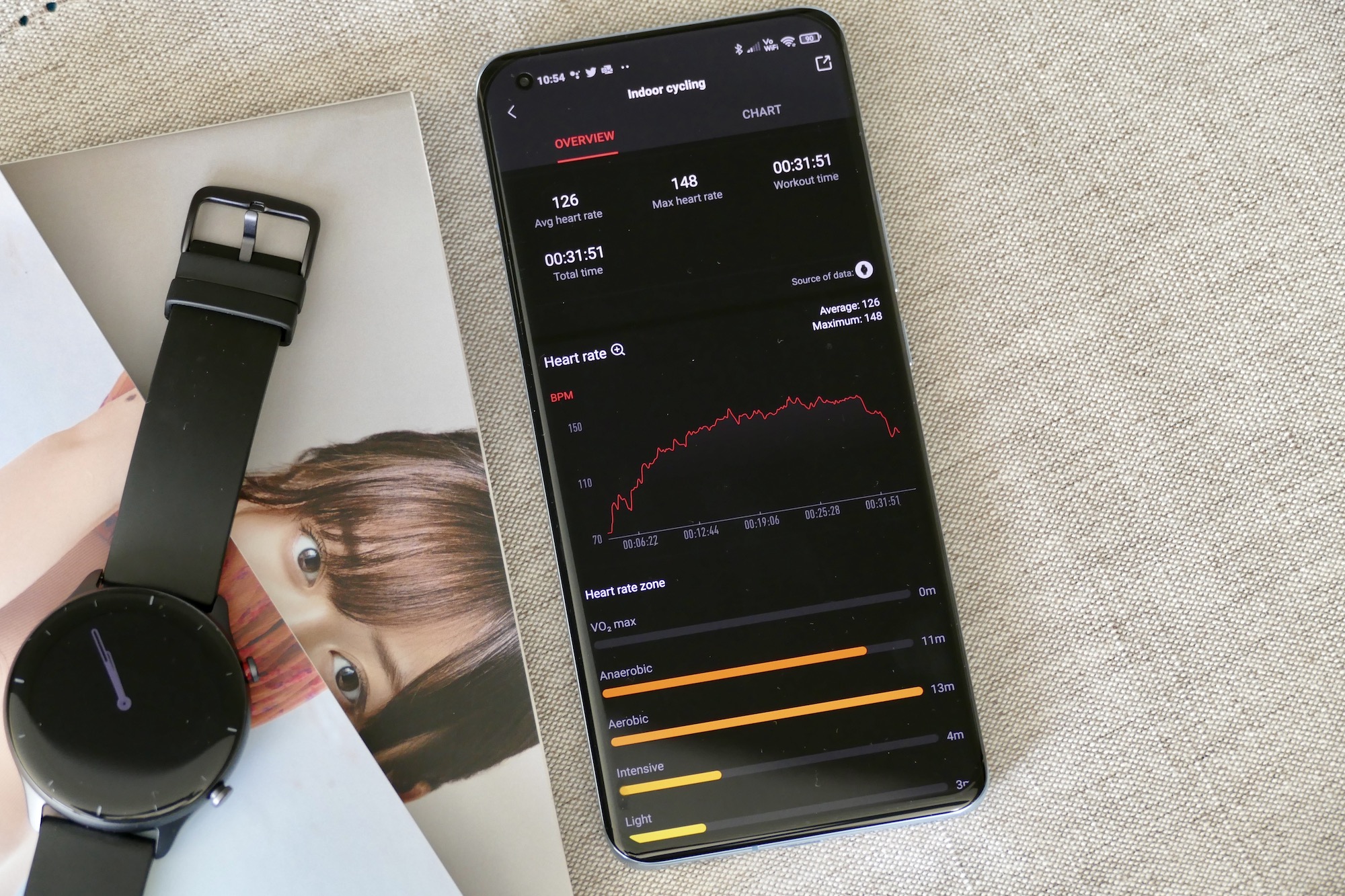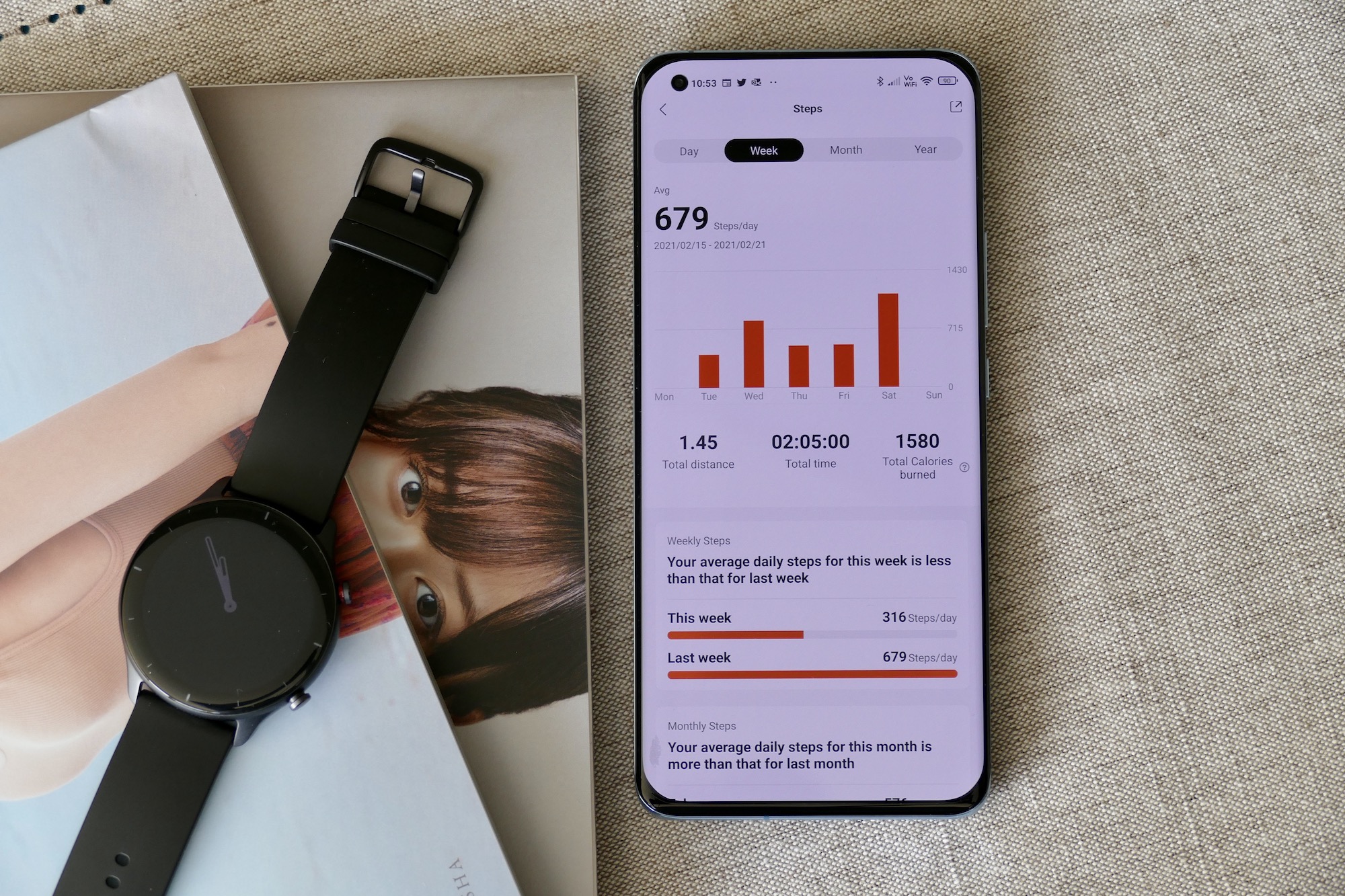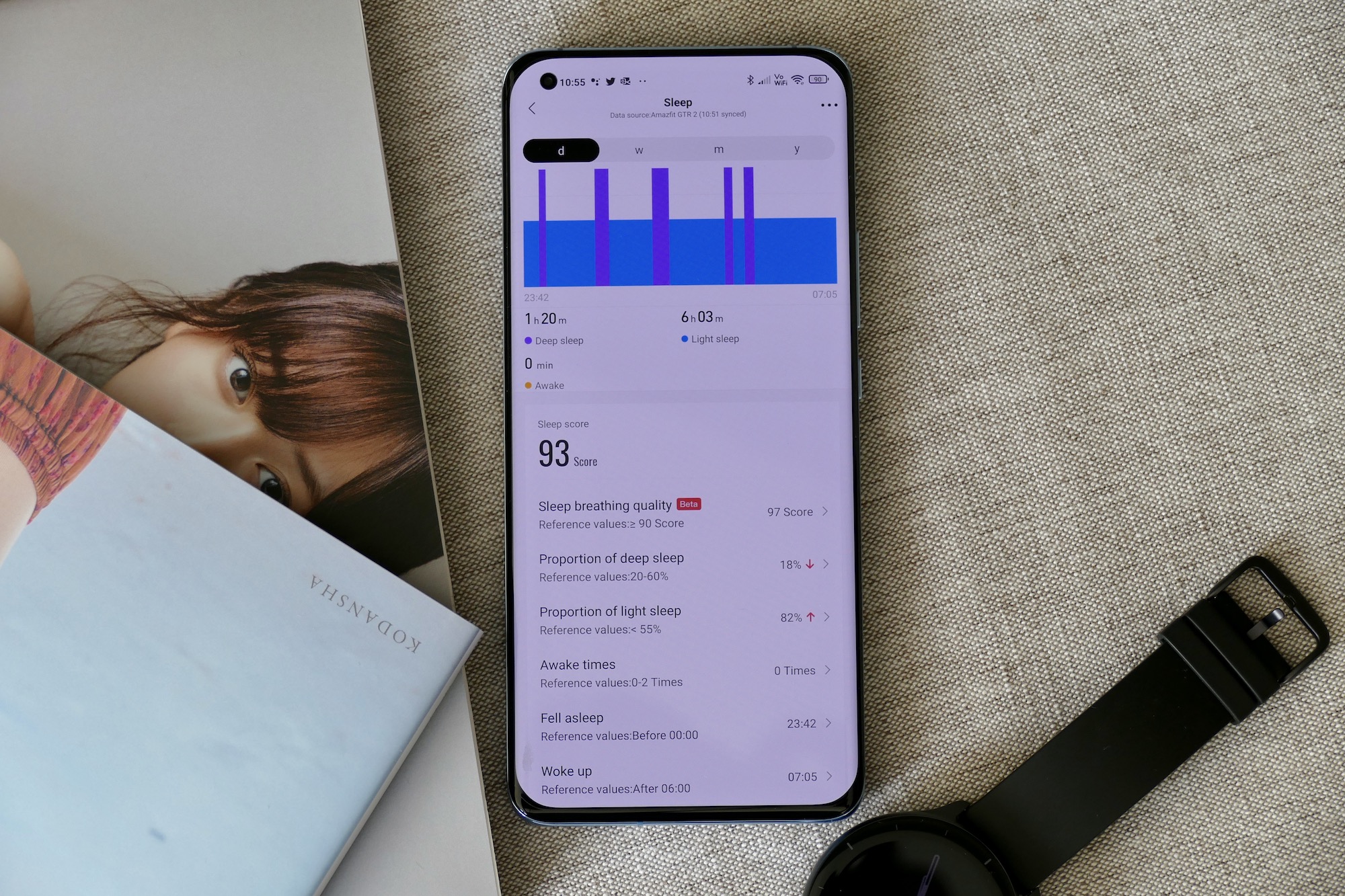“The Amazfit GTR 2e is almost exactly the same as the Amazfit GTR 2, just $40 cheaper. Save yourself some money, and buy this one.”
- Plenty of workout and health tracking features
- Low price
- Pretty design
- Comfortable to wear all the time
- Limited notification support
- Battery life much shorter than advertised
Smartwatch and wearables company Amazfit decided its already good-value GTR 2 smartwatch wasn’t good enough value and announced the GTR 2e at CES 2021. It costs $140, compared to the $180 GTR 2, and on the surface, they look almost identical.
Dig deeper, and there are only a few changes, leaving us questioning why we should buy the GTR 2 at all. After using the GTR 2e for a while, the answer is clear — save some money and buy the cheaper one. Let’s get into why.
Design
Before we get started, you should know that like the GTR 2, there are two models available — the Amazfit GTR 2e with a round body, while the GTS 2e with a square body, similar to the Apple Watch. Apart from the differences in design, the two watches are identical, so if you’d prefer the square version and want to know if it’s any good, don’t worry as all the points below about the GTR 2e apply to the GTS 2e.

The design definitely lets you know the GTR 2e is a “watch,” in that there’s little visual flourish outside of it being round, having two buttons, and being attached to a strap. It’s definitely not unattractive, but it is a little generic. The GTR 2e does come in a few colors, including a brighter green, but in black it’s a simple, stealthy, and unassuming smartwatch on your wrist.

The case is made from aluminum alloy with curved glass over a 1.65-inch AMOLED screen with a 454 x 454-pixel resolution and a 341 pixel-per-inch (PPI) density, the same as the GTR 2. Amazfit says a vacuum coating has been applied to the tempered glass to make sure it resists fingerprints, but it does not come with the additional scratch protection you get on the GTR 2’s glass. The 2.5D curve on the body and glass is supposedly different from the GTR 2’s 3D curve, but I can barely feel any change when directly comparing the two.

It feels solidly made but is very light, and it can feel a little cheap. For example, the case back is plastic and although it is glass over the screen, it’s so thin it doesn’t feel much like it. There are two buttons on the side of the body, the top one with a sporty red flash around it, and they have a precise, if not very tactile, feeling. It’s all attached to a simple black silicone strap, which provides plenty of adjustment and doesn’t get uncomfortable. I could happily wear the GTR 2e all day and night, due to the light construction and soft strap.
Dislikes surround the screen. The GTR 2e’s bezel is simpler and the GTR 2’s and isn’t as visually striking, and the thick surround around the screen is very noticeable in some lighting conditions and angles. While the curve makes it easy to swipe across, the tempered glass doesn’t have the most pleasant under-finger feel. It’s nowhere near as fluid or deliciously cold-to-the-touch as the Apple Watch, or quality Wear OS smartwatches like the Citizen CZ Smart. The small collection of watch faces are generic and dull.
I could happily wear the GTR 2e all day and night, due to the light construction and soft strap
You can’t have everything for $140, and overall the GTR 2e is a good-looking, if a little generic, solidly made smartwatch. Despite the price difference, it doesn’t differ greatly from the GTR 2 either, and there’s no reason at all to spend more to get it.
Software and operation
The Amazfit GTR 2e uses the company’s own operating system, and not Google’s Wear OS, which syncs to the Zepp app on your phone. The setup process is quick, perhaps more so than setting up a Wear OS watch, but the app does need you to dig into the phone’s settings to grant it various permissions. Do this and you receive notifications more reliably than most Wear OS smartwatches too.

Moving through the menus on the watch is performed by swiping up and down on the screen, and the layout will be familiar to anyone who has used a modern smartwatch — down for shortcuts, up for notifications, and across for different Tile-style widgets — while the buttons open the menu or activate workout tracking.
Scrolling through the menus, opening the apps, and generally interacting with the watch is pain-free. It’s fast and smooth enough not to be annoying, just don’t expect Apple Watch-levels of polish and fluidity. Notifications are mostly reliable, but not every app delivers them, Microsoft Teams was a no-show, for example, and when they do arrive text is sometimes oddly formatted. You can’t interact with them either, so consider the GTR 2e’s notifications for-your-information only, and the raise-to-wake activation doesn’t always show the incoming notification, reducing convenience.
I’ve been using the GTR 2e connected to a Xiaomi Mi 11 smartphone. The Zepp app collates all your fitness tracking data and has various settings for the watch too. It’s functional rather than beautiful, and has mostly stayed connected to the watch. There’s a notification on the phone which clearly tells you if it’s disconnected, which is helpful on the rare occasion the Bluetooth drops out. The GTR 2e doesn’t have Wi-Fi, its biggest spec difference compared to the GTR 2, but I didn’t notice its absence.

The GTR 2e is a relatively basic smartwatch, in that it doesn’t use apps, so I didn’t miss the Wi-Fi, which usually facilitates faster app performance. I also didn’t notice the GTR 2e drop connection with my phone regularly either, so I didn’t feel the lack of Wi-Fi impacted general use at all. Another feature that’s missing compared to the GTR 2 is a speaker, so you can’t answer calls on your watch.
The GTR 2e doesn’t have Wi-Fi, its biggest spec difference compared to the GTR 2, but I didn’t notice its absence.
When I first tried an Amazfit product, the software was one of the worst parts about it. The company has continually and significantly improved the app and the watch’s operating system since then, and it’s no longer a reason not to buy. It’s great to see the software has improved over the version installed on my review GTR 2 as well, including more workouts, and faster activity tracking recognition. It’s not as fully featured or polished as operating systems from Apple, Samsung, or Google, but it’s usable on a daily basis. However, while the software has proven reliable, the battery performance suggests some optimization is needed.
Battery
Amazfit claims about 24 days of typical use from the GTR 2e’s battery, which is 10 days more than it expects from the GTR 2. However, it has not achieved this target during my review period, or even come close. Without the automatic heart rate tracking, which is required by features like the Personal Activity Intelligence (PAI) reading, the battery drained at about 10% per day, with a single daily non-GPS workout and sleep tracked.

Switch the heart rate tracking on, with the one-minute interval recommended by the PAI app, and the always-on time display, and the battery had reduced to 20% on day six and would need charging again on day seven. This was a serious letdown, as even with these power-hungry features active it still misses Amazfit’s “heavy use” target of 12 days. The battery was supposed to be one of the main advantages of the GTR 2e, but instead, it’s the biggest disappointment.
Fitness tracking and other features
Health tracking, rather than smartwatch functionality, is the Amazfit GTR 2e’s specialty. There’s a massive list of more than 90 activities to track on the GTR 2e, and all are accessed using the lower button on the case, or through the menu. The list presented can be edited so your preferred workouts are instantly available. Data is clearly presented on the watch, it’s easy to start and stop workouts, there’s GPS for running and cycling, plus a heart rate sensor to provide in-depth tracking and data.

Indoor activity tracking is fast and easy to get started and provides the usual information including calories, time elapsed, heart rate, and when on a stationary bike, handy related stats like heart rate zone. Swimming includes some additional stroke-related data, but no specific stats like SWOLF, while the GPS signal is acquired in about 20 seconds when you’re outside.
you can build up a comprehensive picture of your health by using the GTR 2e.
In addition to the heart rate sensor, the GTR 2e has a blood oxygen (Sp02) sensor and can measure stress too. Neither of these are medical-grade, so results are best treated as reference, although the Sp02 data can be beneficial when tracking sleep. I found the results consistent with those I get from the Apple Watch. The Amazfit GTR 2e also has a temperature sensor built in, which the more expensive GTR 2 doesn’t have. It measures skin temperature when worn, or ambient temperature when not, and is also designed for reference.
Combine all this with the Personal Activity Intelligence metric and sleep tracking, and you can build up a comprehensive picture of your health by using the GTR 2e, even if you’re a relatively committed fitness fan. The package is let down by the Zepp app, which hides its workout data away, and isn’t especially inspiring to use. The app is far less user-friendly than Fossil’s Wellness app or as visually appealing as Apple Health or Google Fit, for example, but it does link with popular apps like Google Fit and Strava.

For my everyday, simple fitness tracking needs the Amazfit GTR 2e does everything I need. I appreciated the updated workout list compared to the version I used on the GTR 2, and consider the watch a step up from a simple tracker like the Galaxy Fit 2, and a better workout partner than more fashion-led smartwatches like the Citizen CZ Smart.
Price and availability
The Amazfit GTR 2e costs $140, or 120 British pounds, and is available through Amazon — at the time of writing it’s on sale for just $125. It comes in either black, grey, or a muted minty green color.
Our take
You pay less for the GTR 2e than the GTR 2, and although there are a few style and design-related differences between them, they’re barely noticeable. Removing Wi-Fi hasn’t made any difference to the battery life, which is nowhere near as good as quoted, but all the fitness and health tracking remains the same.
I already recommended the Amazfit GTR 2, and not only do I recommend the GTR 2e to anyone who wants a fitness-orientated smartwatch without spending too much on one, it’s really the better buy over the GTR 2. Neither are design-led or have significant material advantages, so why not just buy the cheaper one?
Is there a better alternative?
The Amazfit GTR 2e is much cheaper than our usual smartwatch recommendations. If cost isn’t an issue, the Apple Watch is the smartwatch to buy if you own an iPhone, or for Android phone owners, we recommend either the Mobvoi Ticwatch Pro 3 or the Samsung Galaxy Watch 3. However, all these are at least twice the price of the Amazfit GTR 2e.
They’re also true smartwatches, meaning they run apps and provide greater smartphone integration. If you are more interested in fitness tracking than the smartwatch aspects, consider a model from Fitbit. The $230 Fitbit Versa 3 has a watch-like design and comparable features, as does a $120 Fitbit Charge 4 just with a traditional fitness band design.
What about the Amazfit GTR 2? It costs a little more than the GTR 2e but doesn’t really provide any additional, must-have features, and the construction and material benefits are minimal. If you’re looking at a smartwatch like the Amazfit GTR 2 and GTR 2e, budget is likely a big consideration, so you may as well save as much as possible, making the GTR 2e the one to buy.
How long will it last?
The watch’s strap, metal body, and glass screen should be hard-wearing if you treat it normally, plus it has a 50-meter water resistance rating, so you can swim with it. Provided Amazfit’s Zepp app continues to be supported, it will technically last for two or more years. However, the design is relatively generic, and you may get tired of the way it looks before the watch or software is out of date.
There’s also enough fitness-related functionality to satisfy both casual and more committed fitness fans involved with the watch. Even if your habits or interests change, the Amazfit GTR 2e’s versatility means you won’t have to suddenly upgrade if you decide surfing or long-distance running is for you.
Should you buy it?
Yes. The battery life may not be as impressive as the specs suggest, but it’s decent, and will hopefully be improved through a software update soon. This aside, the Amazfit GTR 2e is a reliable, good-value fitness-orientated smartwatch.


